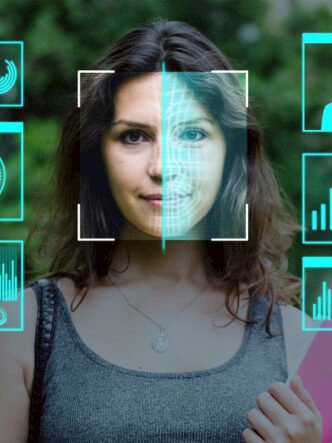Building skills has always been important but the rapid speed at which the modern workplace is evolving makes it more important than ever. The challenge comes in nurturing talent and giving employees access to upskilling and reskilling in a way that has the most impact. Upskilling involves taking existing skill sets and elevating them to the next level. Reskilling the workforce involves teaching employees new skills. They both make employees more productive in specific roles.
Traditional training programs often use a generic approach to cater to a diverse audience. They fall short for many reasons such as a lack of flexibility and scalability. These programs can’t accommodate different learning styles, needs, and gaps in training. Not every employee can attend scheduled training sessions. This can result in inconsistent skill levels across an organization.
In-person training can also be costly, especially for large organizations with widely dispersed employees. A lack of engagement is typical when using traditional training methods and often results in lower retention rates.
When employees can’t see a clear path to improving their careers, it can be hard to retain them. Video learning for employee upskilling and reskilling has many advantages. Corporate training videos can provide relevant, engaging, on-the-job training. With personalized training, employees gain the precise skills they need to succeed. Using technology such as AI and video hosting platforms facilitates personalized and interactive training. Equipping employees with new skills means they can grow their careers and help the organizations they work for to succeed.

How video learning supports upskilling and reskilling
Video-based learning for upskilling and reskilling of employees has many benefits. It can enhance engagement and reduce costs. When training is scalable it enables consistent rolling out of training programs across many locations. This helps large organizations to ensure that employees all receive the same quality of training.
1. Flexible, self-paced learning
Employees need to incorporate skills training into their busy schedules. It helps if training materials are available for use at any time and from anywhere. On-demand videos in a video library can meet this need. It is particularly beneficial for remote employees or those in different time zones. Learning in a stress-free environment tends to result in better learning outcomes.
Corporate trainers and HR professionals can give employees easy access to training videos on many different topics. This enables them to learn at their own pace. They can rewind and watch complex topics again or skip over material they already understand. If an employee needs to brush up on a particular skill before a new project, on-demand video training makes it possible.
2. Microlearning videos
An L & D strategy to capture attention is to make use of microlearning videos. They offer skills training in a way that’s easy to absorb and retain. L & D leaders need to find out more about the importance of microlearning in workplace learning.
Microlearning breaks information up into smaller, more digestible units. Short videos of about three to five minutes usually deliver specific pieces of information in a concise and engaging way. Employees can learn and retain information one small step at a time. They can access microlearning videos on their smartphones even when they’re on the go.
3. Interactive training
Interactive training offers employees hands-on experience. They become actively involved in the learning process rather than receiving information passively.
- Quizzes give employees and trainers immediate feedback on progress. For example, an interactive quiz can present a simulated customer interaction and test employees on how to handle a complaint. Software skills training could include quizzes on navigating user interfaces or troubleshooting errors.
- Clickable links can take learners to more learning resources such as a follow-up video or an ebook to download.
- Annotations offer employees access to additional information without interrupting the flow of a video.
- Surveys and polls allow trainers to find out what employees think of training. This can give ideas on how to improve videos.
- Video chaptering allows employees to go straight to the specific content they want to watch instead of watching the whole video to find it.
- Calls to action (CTAs) may require employees to take actions that will help to reinforce learning.
- Video messaging enables two-way communication that creates more connection in an online learning environment.
Best practices for using video to upskill employees
Creating short, engaging, and skill-focused videos
- Define a specific, observable action viewers should be able to take after watching.
- Choose one topic to avoid overwhelming viewers and reinforce the message with clear, relevant examples.
- Offer step-by-step guidance and ensure any instructions are clear and concise.
- A script should use conversational language and avoid too much jargon.
- The use of video training templates can significantly speed up the process of creating training videos.
- Adding on-screen text, animations, and transitions in the editing process can help employees visualize the ideas trainers want to communicate.
The Cincopa video hosting platform supports both live streaming and video on demand (VOD). With live transcoding and Adaptive BitRate Playback (ABR), the live stream will be at optimal quality no matter where employees watch. Users can host a live stream and save it for employees to watch later as VOD. They can also repurpose it into bite-sized content. With CincoTube, trainers can create channels to house their training videos.
Implementing real-world scenarios and simulations
Scenario-based training places employees in realistic workplace situations so they can build skills like customer service and conflict resolution. They can make decisions and experience the consequences in a safe environment. Detailed feedback helps them to refine their skills and reinforces learning.
Employees can practice improving their negotiation skills through role-play scenarios. Real-world sales scenarios can help them to craft persuasive pitches. A safety and compliance scenario could involve selecting appropriate personal protective equipment (PPE) for a task. Technology training may include configuring system settings in a simulated environment.
Ensuring accessibility – mobile-friendly videos with captions
All employees should have access to the same quality of L&D. Organizations need to remove any barriers in the way of this.
- Captions and transcripts offer access to employees with hearing disabilities and to non-native English speakers.
- Videos should be able to adapt seamlessly to a wide range of screen sizes, including smaller mobile device screens.
Using game-based learning
This integrates gaming elements into videos. For example, employees may be able to track their progress through levels or points. Leaderboards allow for some friendly competition between employees.

Examples of companies using video for workforce training
Cisco is a multinational corporation that specializes in digital communications technology. It uses whiteboard animations in its corporate training videos. This helps to explain complex concepts in a simple way that’s easy for employees to digest.
Amazon uses interactive videos to train its corporate staff, warehouse employees, and customer service representatives. This includes video-based lessons for reskilling and upskilling employees in areas such as machine learning, business operations, and cloud computing. It works because employees across the global workforce can access training and learn at their own pace.
Microsoft’s Learn platform and LinkedIn Learning use video-based training. This includes interactive tutorials and AI-driven personalized learning pathways. The videos help to improve technical and soft skills. The expert-led expert-led videos include hands-on labs and quizzes. This makes the learning applicable to real world tasks.
Measuring the success of video-based employee training
Measuring the success of skills training videos involves tracking employee engagement with videos, completion of quizzes, etc.
Cincopa’s enterprise video training platform offers advanced analytics to measure success. Detailed heatmaps show how employees behave when they watch videos and their level of engagement. Insights into whether they complete videos or drop off and where they engage most can help with refining and improving training videos. Corporate trainers must keep track of what technological advancements will shape the future of online learning.
Conclusion
Training videos provide a powerful way to future-proof workforces. They enhance the upskilling and reskilling of employees. This is because they are flexible, engaging, and interactive. Integrating them into training will help organizations to deliver customized learning experiences. They will improve employee retention and enhance business performance. The Cincopa platform helps organizations create, host, and track upskilling and reskilling programs. Signing up for a free trial on the Cincopa home page allows them to test the solutions it offers to enhance their training programs.









